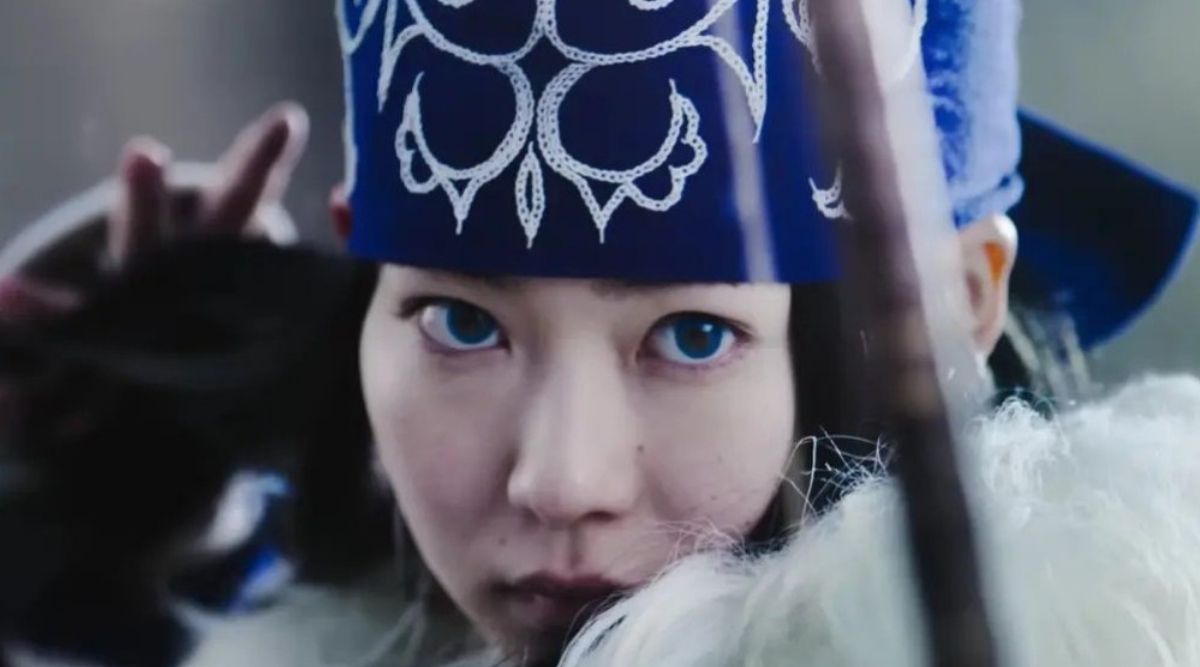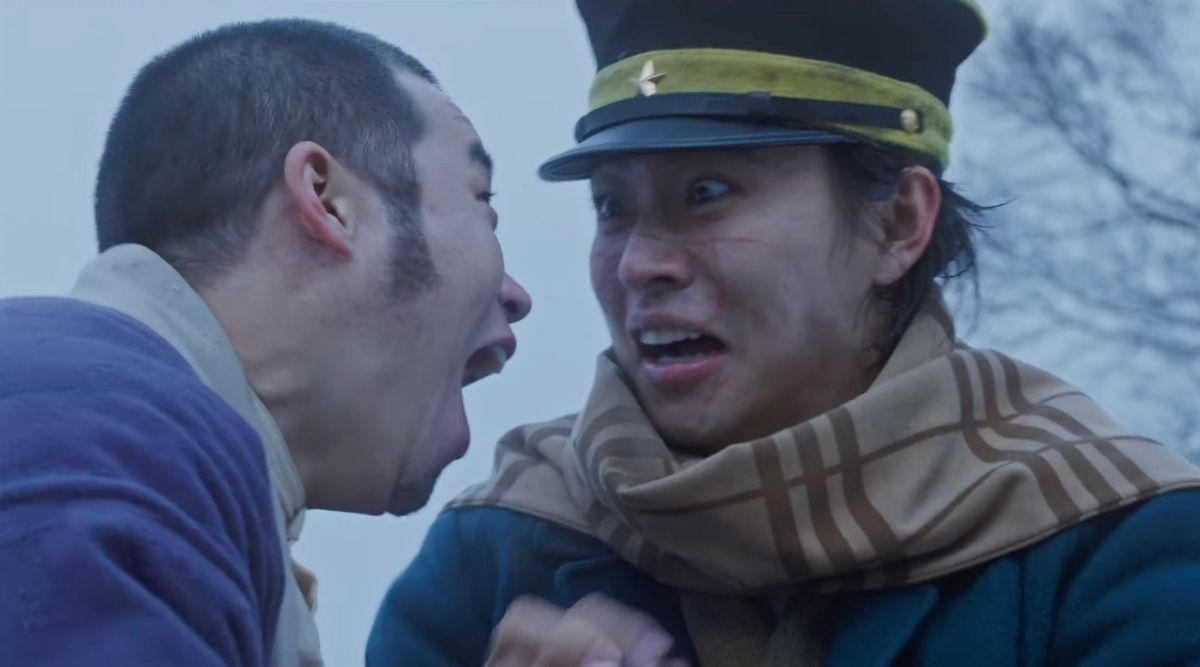While serving in the Russo-Japanese War, Suichi Sugimoto (Kento Yamazaki, Alice in Borderland) earned the nickname “The Immortal Sugimoto.” Having returned to Japan, he finds himself swept up in a search for missing gold, linked to 24 escaped prison inmates with the treasure’s secrets tattooed on their bodies. But with two ruthless factions vying for the prize, Sugimoto faces hard challenges ahead of him. Luckily he won’t have to face them alone in Golden Kamuy, directed by Shigeaki Kubo, written by Tsutomu Kuroiwa (One Piece Film: Red) and Satura Noda, based on the manga written and drawn by Satura Noda.
Golden Kamuy has a lot on its plate. As the opening chapter of a story, it has to establish characters, narrative objects, and conflicts, all while also telling a complete story that feels rewarding for the viewer in its own right. It manages to make good on all of these demands with an impressive level of success. At the center of this success is its lead, Sugimoto.
The Immortal Sugimoto is a surprisingly human character given his impressive moniker. A character generally trying to do the right thing, he showcases great determination, grit, and fighting ability, while also displaying less-than-stellar judgment at times. The mash-up of good and bad characteristics is balanced wonderfully, creating a kind-hearted protagonist who won’t shy away from doing what has to be done.

Along with his innate character traits, Sugimoto is given added depth by the scars he carries from his time in the military. Viewed historically as a small-scale precursor to the bloody trench fighting of World War I, the Russo-Japanese War was a brutal affair that would leave countless lives scarred forever. How the events of the war changed Sugimoto and how they inform his goals throughout Golden Kamuy are unveiled throughout the movie.
Sugimoto’s war trauma is introduced to the viewer through a harsh opening that takes place during a particularly brutal moment of fighting. While this opening does a fantastic job of conveying to the viewer how costly the war and the methods it was prosecuted with were, it never feels like the bloody fighting is sensationalized. There is ample blood when needed, but it never feels gratuitous.
This is in stark contrast to the fictional violence that populates the rest of the movie’s battles. There are some truly painful hits in Golden Kamuy. The best example of which features a bear literally swiping someone’s face off.
Aiding Sogimoto in his journey through this violent tale is Asirpa (Anna Yamada), an Ainu woman who wants to find the gold that was originally stolen from her people. Ainu provides a critical stabilizing element to the film’s often violent narrative. Heavily against killing, she brings a moral check to Sugimoto’s journey, as well as being a representative for the local indigenous people of Hokkaido, who seem doomed to fall into the middle of an ensuing political struggle.

It is the personal arc between Sugimoto and Asirpa that forms the central narrative of Golden Kamuy. As two people from different worlds, the duo struggle at first to find common ground. Even when that ground seems solid, old wounds creep up, posing further problems for the pair. Where the film leaves them by its end makes for a satisfying arc, giving the movie a feeling of completion, even though there is far more to tell in the larger narrative.
The previously mentioned political struggle forms out of the other two factions searching for the gold. One is made up of retired soldiers disenfranchised with how they were treated during the war and since, while the other is led by former Shinsengumi members. Both factions are looking to seize the gold to fund efforts to take control of Hokkaido, setting up a new regional government. While Golden Kamuy focuses more on the former group, both sides are shown to be ruthless and willing to do whatever it takes to achieve their goals.
One element of this movie that must be talked about is its lighting. Bonfires, moonlight nights, and other light sources are used to striking effect. Several key shots during the film pop with color. How these colors are set up to illuminate characters feeds into the emotional tone of key scenes, creating lasting impressions.

Helping to build on the mood and gravity of the real-world elements of the film is its narration. When laying the background for the Russo-Japanese War as well as the Ainu people, the film employs the skillful voice work of Kenjirô Tsuda (Jujutsu Kaisen) to inform the audience of key details. Tsuda’s powerful voice draws the viewer in, reinforcing the importance of the information in a matter-of-fact way that manages to subtly layer emotion onto his informative lines.
The only place where Golden Kamuy stumbles significantly is in some of its wilder character portrayals. Likely pulled directly from its source material, several actors lean a bit too hard into trying to make their characters feel cartoonish. There are forms of visual comedy that can work in a manga that just doesn’t translate to live action.
Golden Kamuy establishes its world and narrative while delivering a story that feels complete. It builds its leading characters up, giving the audience plenty to care about as they see them contend with their bloodthirsty adversaries.
Golden Kamuy is streaming now on Netflix.
Golden Kamuy
-
Rating - 8/108/10
TL;DR
Golden Kamuy establishes its world and narrative while delivering a story that feels complete. It builds its leading characters up, giving the audience plenty to care about as they see them contend with their bloodthirsty adversaries.







